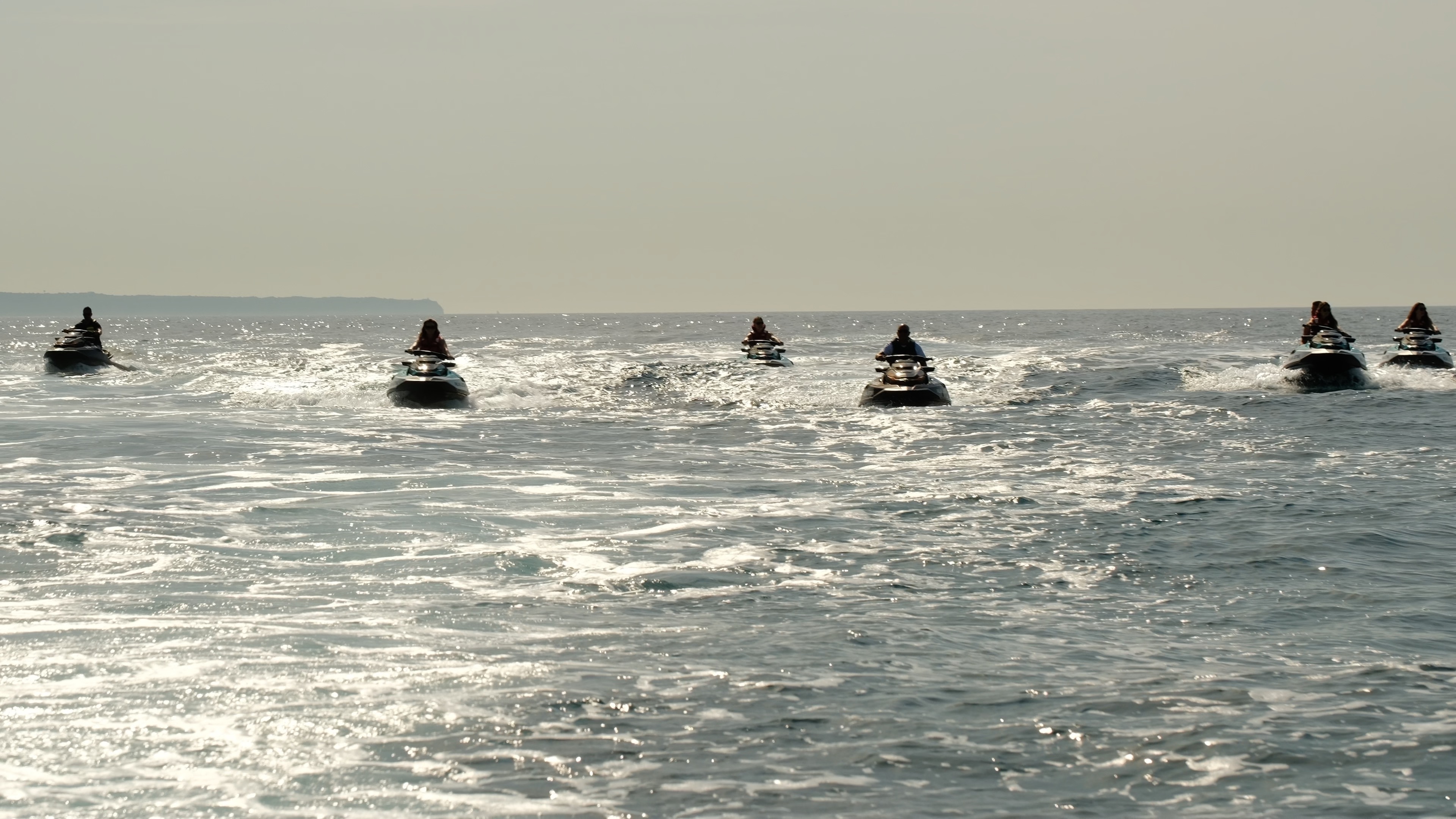Jet skiing is not just a recreational activity; it's a thrilling adventure that allows you to glide across the water with speed and agility. Whether you're a beginner or aiming to refine your skills, progressing from novice to pro requires dedication, practice, and a commitment to safety. Here’s a comprehensive guide to help you navigate your jet skiing journey and become a skilled rider capable of handling various water conditions.
Getting Started: Basics for Beginners
Jet skiing begins with understanding the fundamental aspects of the watercraft and safety protocols. As a beginner, it's crucial to acquaint yourself with the following:
Jet Ski Controls and Features: Familiarize yourself with the throttle, steering mechanism, and safety features such as the kill switch and emergency lanyard. Knowing these controls will ensure you can operate the jet ski safely and effectively.
Safety First: Always wear a properly fitted life jacket and adhere to all safety guidelines provided by rental companies or local authorities. When jet skiing, understand the rules and regulations of the water body where you plan to ride, including speed limits and designated riding areas.
Basic Maneuvers: Practice essential maneuvers in calm waters, such as starting, stopping, and making gentle turns. This initial practice phase helps build confidence and familiarity with the jet ski’s handling.
Progressing Your Skills: Intermediate Techniques
Once you’ve mastered the basics, it’s time to refine your skills and expand your capabilities on the water. Intermediate techniques include:
Mastering Turns: Learn different turning techniques, such as leaning into turns and using throttle control to navigate corners smoothly. Practice these maneuvers in varying conditions to become proficient at adjusting your speed and posture effectively.
Handling Different Water Conditions: Experiment with riding in different water conditions, from calm lakes to choppy coastal waters. Understanding how to adjust your riding technique based on water conditions will enhance your confidence and control.
Increasing Speed: Gradually increase your speed as you become more comfortable with the jet ski’s power and responsiveness. Focus on maintaining stability and control at higher speeds, practicing acceleration and deceleration in controlled environments.
Advanced Techniques: Becoming a Pro
For jet skiing riders aspiring to reach a professional level, mastering advanced techniques is essential. These include:
Advanced Maneuvers: Practice executing sharp turns, jumps, and riding through choppy waters with precision and agility. Advanced riders often incorporate freestyle techniques, such as 360-degree spins and aerial tricks, to showcase their skills on the water.
Standing Up (Stand-Up Jet Skiing): Experiment with standing up while riding to improve agility and control. This technique requires balance and core strength but allows for greater maneuverability and responsiveness on the jet ski.
Navigating Adverse Conditions: Develop strategies for navigating through adverse conditions like strong currents, wind gusts, and large waves. Advanced riders rely on experience and skill to maintain stability and safety in challenging environments.
Tips for Every Skill Level
Regardless of your current skill level, these tips will help you improve and enjoy jet skiing to the fullest:
Consistent Practice: Regular practice is key to improving your skills and building confidence on the water. Dedicate time to honing your techniques and mastering new maneuvers.
Physical Fitness: Enhance your physical fitness, focusing on core strength and flexibility. Strong core muscles help maintain balance and stability during rides, while flexibility improves your ability to adjust and maneuver the jet ski effectively.
Weather Awareness: Stay informed about weather forecasts and water conditions before heading out. Avoid riding in severe weather or hazardous conditions that could compromise safety.
Safety and Etiquette on the Water
Safety is paramount in jet skiing, ensuring both your well-being and the enjoyment of others on the water. Key safety practices include:
Respect Wildlife and Environment: Avoid disturbing wildlife and adhere to eco-friendly practices while enjoying the water. Protecting the environment ensures the sustainability of jet skiing and other water sports.
Emergency Preparedness: Familiarize yourself with emergency procedures and carry essential safety equipment, such as a whistle, signaling devices, and a first aid kit. Knowing how to respond to emergencies can prevent accidents and mitigate risks.
Group Riding Etiquette: When riding with others, maintain safe distances, communicate clearly, and respect each rider’s space on the water. Follow local regulations and guidelines for group rides to promote safety and harmony among riders.
Gear and Equipment
Investing in quality gear and maintaining your jet ski are crucial for a safe and enjoyable experience:
Choosing the Right Gear: Wear appropriate gear such as a well-fitted life jacket, wetsuit, goggles, and gloves to protect yourself from the elements and enhance comfort during rides.
Jet Ski Maintenance: Regularly maintain your jet ski to ensure optimal performance and safety. Schedule routine inspections, check for mechanical issues, and follow manufacturer recommendations for maintenance and servicing.
Conclusion
Mastering jet skiing from novice to pro requires dedication, practice, and a commitment to ongoing skill development and safety. Whether you're starting your jet skiing journey or aiming to enhance your proficiency, these tips and techniques will guide you through each stage of your progression. With proper training, experience, and respect for safety protocols, you can enjoy the thrill of jet skiing while exploring new waters and mastering the art of this dynamic water sport. Remember, safety always comes first, followed by continuous practice and a passion for adventure on the water.
